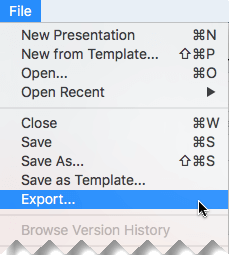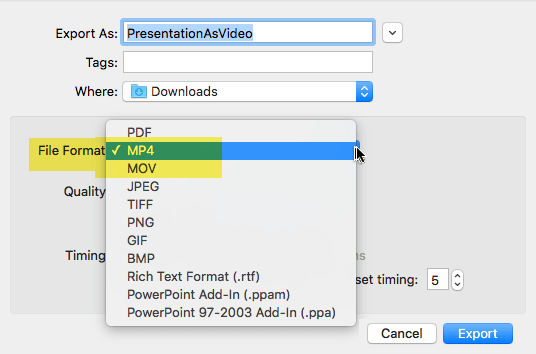Export PowerPoint to MOV or MP4
Transcoding
When you add a video file to the schedule, the system will determine if the video file can be used directly, or if it needs to be automatically converted to a different video format first. This process is called transcoding.
Uploading video content that doesn't need to be transcoded saves time and resources, and ensures that the video looks exactly the same as on your own computer.
Save PowerPoint in a video format
Select File > Export.

(Don't use Save As, because it doesn't offer video options.)
Open the File Format list and select your desired video format (MP4 or MOV).

If the MP4 and MOV options aren't in your version of PowerPoint, see Requirements for more information.
Select the video Quality you want: Presentation Quality, Internet Quality, or Low Quality. The higher the video quality, the larger the file size.
If you have recorded timings and want to use them in the video you create from your presentation, make sure the box next to Use Recorded Timings and Narrations is checked. You can also choose to set the amount of time the video will spend on each slide if you don't have a set timing.
When you've made all your selections, choose Export.
Note: When you export your presentation as a video, any narrated audio that was recorded in Slide Show will play, but other embedded media files won't play.
After you've saved your presentation as a video, you can share it just as you would any other video, by using applications or devices that can open and play videos.
Limitations on presentations saved as movies
When a presentation plays as a movie, each slide appears for a uniform amount of time unless you set individual timings, or record the slide show to establish timing for the entire presentation. For more information about setting slide timings, see Rehearse and set slide timings.
Several transitions play differently in a movie than they do in a presentation. Animation effects don't play in a movie at all.
